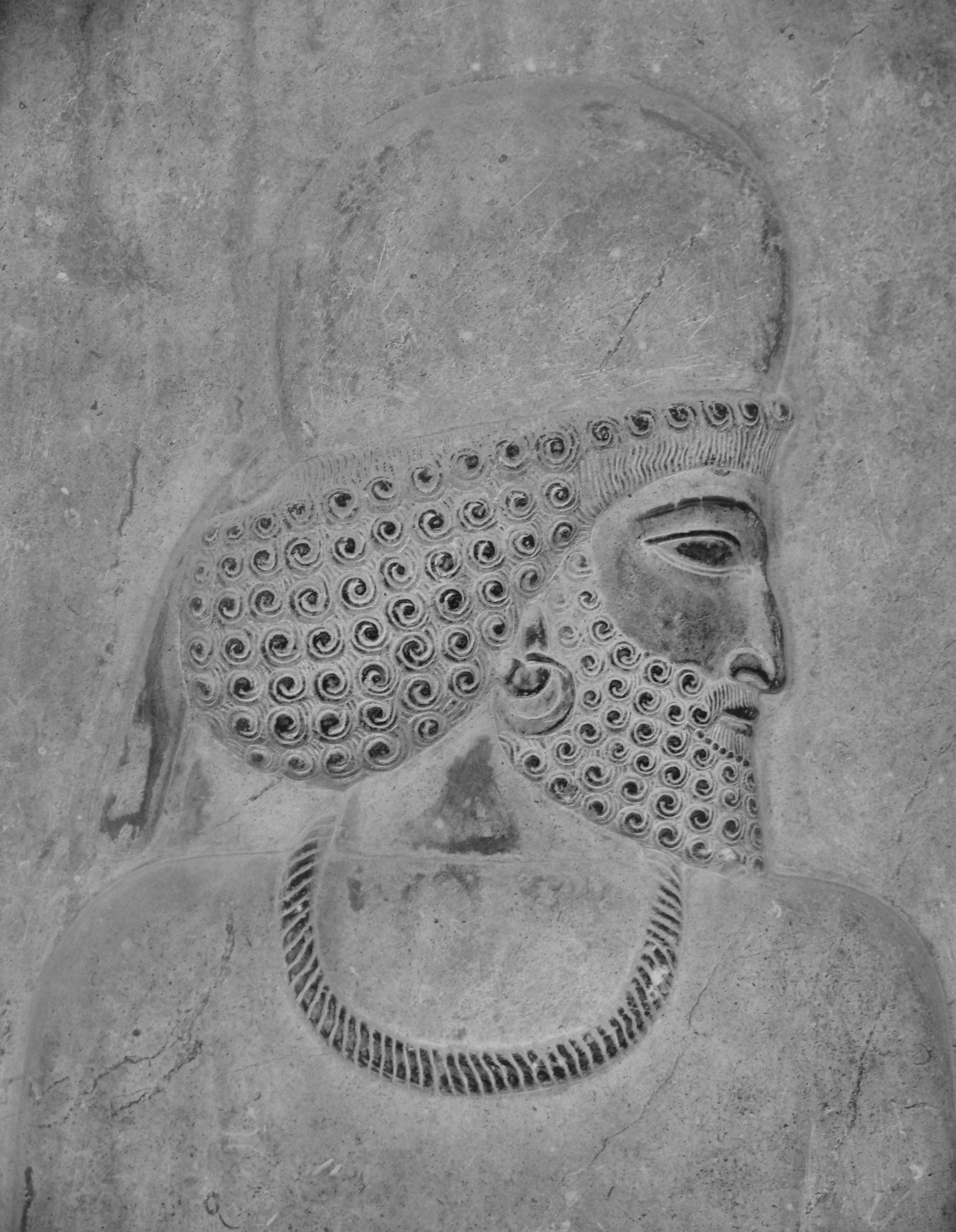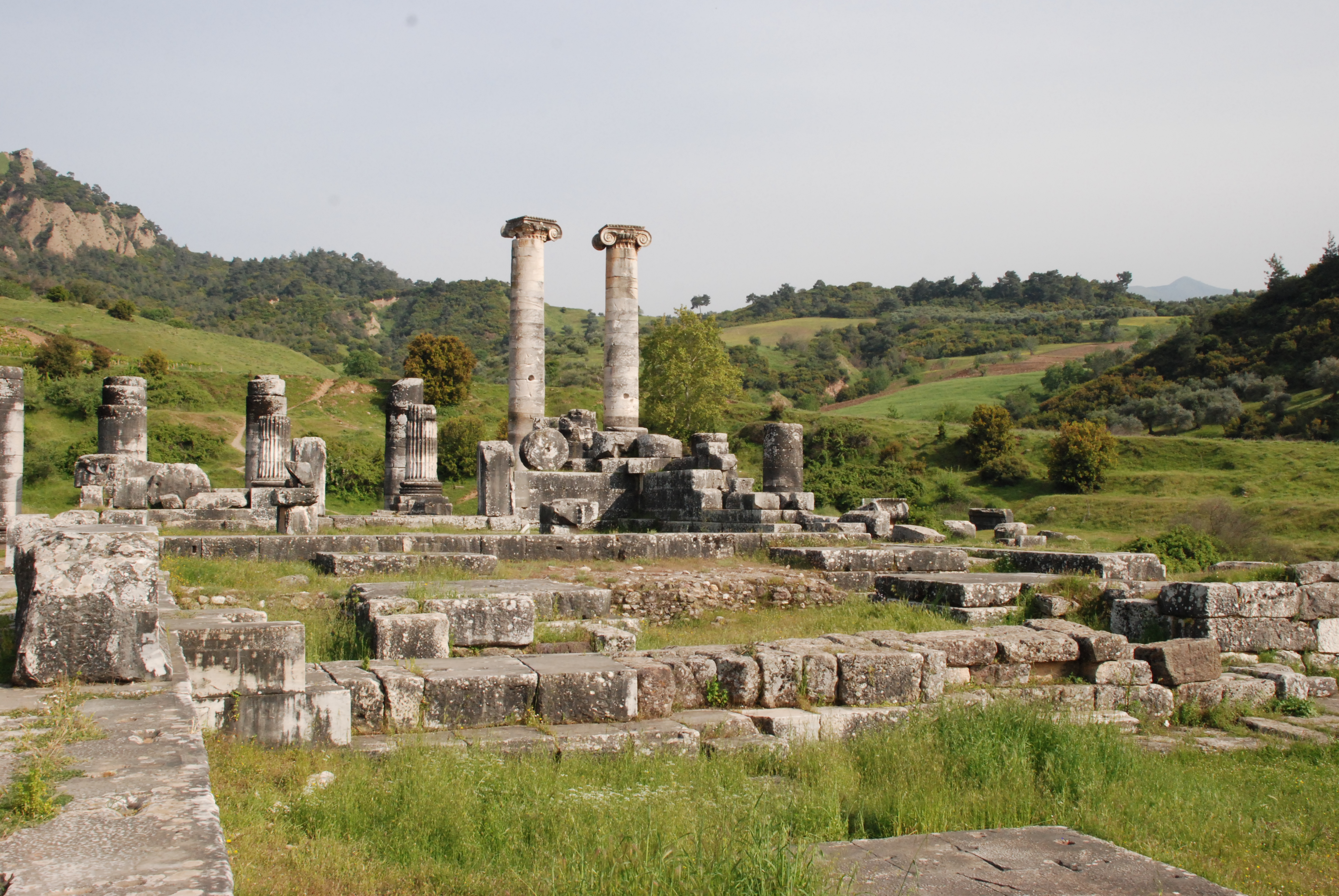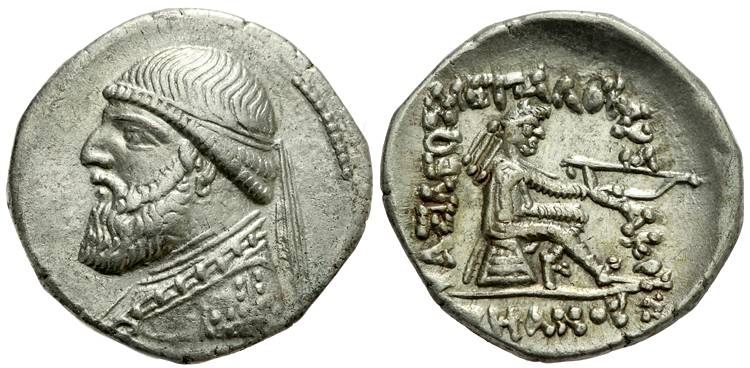|
Medes
The Medes were an Iron Age Iranian peoples, Iranian people who spoke the Median language and who inhabited an area known as Media (region), Media between western Iran, western and northern Iran. Around the 11th century BC, they occupied the mountainous region of northwestern Iran and the northeastern and eastern region of Mesopotamia in the vicinity of Ecbatana (present-day Hamadan). Their consolidation in Iran is believed to have occurred during the 8th century BC. In the 7th century BC, all of western Iran and some other territories were under Median rule, but their precise geographic extent remains unknown. Although widely recognized as playing an important role in the history of the ancient Near East, the Medes left no written records to reconstruct their history. Knowledge of the Medes comes only from foreign sources such as the Assyrians, Babylonians, Armenians and Ancient Greece, Greeks, as well as a few Iranian archaeological sites, which are believed to have been occu ... [...More Info...] [...Related Items...] OR: [Wikipedia] [Google] [Baidu] |
Median State
Media (Old Persian: ''Māda''; Ancient Greek, Greek: ''Mēdía''; Akkadian language, Akkadian: ''wikt:𐎶𐎠𐎭#Descendants, Mādāya'') was a political entity centered in Ecbatana that existed from the 7th century BCE until the mid-6th century BCE and is believed to have dominated a significant portion of the Iranian plateau, preceding the powerful Achaemenid Empire. The frequent interference of the Assyrians in the Zagros Mountains, Zagros region led to the process of unifying the Median tribes. By 612 BCE, the Medes became strong enough to overthrow the declining Assyrian empire in alliance with the Babylonians. However, contemporary scholarship tends to be skeptical about the existence of a united Median kingdom or state, at least for most of the 7th century BCE. According to classical historiography, Media emerged as one major power of the ancient Near East after the collapse of Assyria. Under Cyaxares (r. 625–585 BCE), the kingdom's borders were expanded to the east ... [...More Info...] [...Related Items...] OR: [Wikipedia] [Google] [Baidu] |
Iranian Peoples
Iranian peoples, or Iranic peoples, are the collective ethnolinguistic groups who are identified chiefly by their native usage of any of the Iranian languages, which are a branch of the Indo-Iranian languages within the Indo-European languages, Indo-European language family. The Proto-Iranian language, Proto-Iranians are believed to have emerged as a separate branch of the Indo-Iranians in Central Asia around the mid-2nd millennium BC. At their peak of expansion in the mid-1st millennium BC, the territory of the Iranian peoples stretched across the entire Eurasian Steppe; from the Danube, Danubian Plains in the west to the Ordos Plateau in the east and the Iranian Plateau in the south.: "From the first millennium b.c., we have abundant historical, archaeological and linguistic sources for the location of the territory inhabited by the Iranian peoples. In this period the territory of the northern Iranians, they being equestrian nomads, extended over the whole zone of the ste ... [...More Info...] [...Related Items...] OR: [Wikipedia] [Google] [Baidu] |
Media (region)
Media (, Middle Persian: ''Mād'') is an Iron Age region of north-western Iran, best known for having been the political and cultural base of the Medes. During the Achaemenid period, it comprised present-day Iranian Azerbaijan, Iranian Kurdistan and western Tabaristan. As a satrapy under Achaemenid rule, it would eventually encompass a wider region, stretching to southern Dagestan in the north. However, after the wars of Alexander the Great, the northern parts were separated due to the Partition of Babylon and became known as ''Atropatene'', while the remaining region became known as ''Lesser Media''. History Under the Medes In 678 BC, Deioces united the Medes, Median tribes of Media and made the first Iran, Iranian Empire. His grandson Cyaxares managed to unite all Iranian peoples, Iranian tribes of History of Iran, Ancient Iran and made his empire a major power. When Cyaxares died he was succeeded by his son, Astyages, who was the last king of the Median Empire. Under the Ac ... [...More Info...] [...Related Items...] OR: [Wikipedia] [Google] [Baidu] |
Ecbatana
Ecbatana () was an ancient city, the capital of the Median kingdom, and the first capital in History of Iran, Iranian history. It later became the summer capital of the Achaemenid Empire, Achaemenid and Parthian Empire, Parthian empires.Nardo, Don. "Ecbatana." ''The Greenhaven Encyclopedia of Ancient Mesopotamia'', edited by Robert B. Kebric, Greenhaven Press, 2007, pp. 97-98. ''Gale In Context: World History'', link.gale.com/apps/doc/CX3205100129/WHIC?u=wylrc_uwyoming&sid=summon&xid=e9682d3c. Accessed 20 Nov. 2022. It was also an important city during the Seleucid Empire, Seleucid and Sasanian Empire, Sasanian empires. It is believed that Ecbatana is located in the Zagros Mountains, the east of central Mesopotamia, on Hagmatana Hill (Tappe-ye Hagmatāna). Ecbatana's strategic location and resources probably made it a popular site even before the 1st millennium BC. Along with Athens in Greece, Rome in Italy and Susa in Iran, Ecbatana is one of the few ancient cities in the world th ... [...More Info...] [...Related Items...] OR: [Wikipedia] [Google] [Baidu] |
Babylonia
Babylonia (; , ) was an Ancient history, ancient Akkadian language, Akkadian-speaking state and cultural area based in the city of Babylon in central-southern Mesopotamia (present-day Iraq and parts of Kuwait, Syria and Iran). It emerged as an Akkadian-populated but Amorites, Amorite-ruled state . During the reign of Hammurabi and afterwards, Babylonia was retrospectively called "the country of Akkad" ( in Akkadian), a deliberate archaism in reference to the previous glory of the Akkadian Empire. It was often involved in rivalry with the older ethno-linguistically related state of Assyria in the north of Mesopotamia and Elam to the east in Ancient Iran. Babylonia briefly became the major power in the region after Hammurabi (floruit, fl. –1752 BC middle chronology, or –1654 BC, short chronology timeline, short chronology) created a short-lived empire, succeeding the earlier Akkadian Empire, Third Dynasty of Ur, and Old Assyrian Empire. The Babylonian Empire rapidly fell apar ... [...More Info...] [...Related Items...] OR: [Wikipedia] [Google] [Baidu] |
Median Language
Median (also Medean or Medic) is an extinct Iranian language which was spoken by the now extinct ancient Medes. It belongs to the Northwestern branch of the Iranian language family, which includes many other much more recently attested and different languages such as Kurdish, Old Azeri, Talysh, Gilaki, Mazandarani, Zaza–Gorani and Baluchi. Attestation Median is attested only by numerous loanwords in Old Persian. Nothing is known of its grammar, “but it shares important phonological isoglosses with Avestan, rather than Old Persian. Under the short lived period of Median rule … Median must to some extent have been the official Iranian language in western Iran”. No documents dating to Median times have been preserved, and it is not known what script these texts might have been in. So far only one inscription of pre- Achaemenid times (a bronze plaque) has been found on the territory of Media from the time Media and Persia were under the control of the Neo-As ... [...More Info...] [...Related Items...] OR: [Wikipedia] [Google] [Baidu] |
Ancient Near East
The ancient Near East was home to many cradles of civilization, spanning Mesopotamia, Egypt, Iran (or Persia), Anatolia and the Armenian highlands, the Levant, and the Arabian Peninsula. As such, the fields of ancient Near East studies and Near Eastern archaeology are one of the most prominent with regard to research in the realm of ancient history. Historically, the Near East denoted an area roughly encompassing the centre of West Asia, having been focused on the lands between Greece and Egypt in the west and Iran in the east. It therefore largely corresponds with the modern-day geopolitical concept of the Middle East. The history of the ancient Near East begins with the rise of Sumer in the 4th millennium BC, though the date that it ends is a subject of debate among scholars; the term covers the region's developments in the Bronze Age and the Iron Age, and is variously considered to end with either the establishment of the Achaemenid Empire in the 6th century BC, the establi ... [...More Info...] [...Related Items...] OR: [Wikipedia] [Google] [Baidu] |
Lydia
Lydia (; ) was an Iron Age Monarchy, kingdom situated in western Anatolia, in modern-day Turkey. Later, it became an important province of the Achaemenid Empire and then the Roman Empire. Its capital was Sardis. At some point before 800 BC, the Lydian people achieved some sort of political cohesion, and existed as an independent kingdom by the 600s BC. At its greatest extent, during the 7th century BC, it covered all of western Anatolia. In 546 BC, it became a Lydia (satrapy), satrapy of the Achaemenid Empire, known as ''Sparda'' in Old Persian. In 133 BC, it became part of the Roman Republic, Roman Asia (Roman province), province of Asia. Lydian coins, made of electrum, are among the oldest in existence, dated to around the 7th century BC. Geography Lydia is generally located east of ancient Ionia in the modern western Turkish provinces of Uşak Province, Uşak, Manisa Province, Manisa and inland İzmir Province, İzmir.Rhodes, P.J. ''A History of the Classical Greek ... [...More Info...] [...Related Items...] OR: [Wikipedia] [Google] [Baidu] |
Assyria
Assyria (Neo-Assyrian cuneiform: , ''māt Aššur'') was a major ancient Mesopotamian civilization that existed as a city-state from the 21st century BC to the 14th century BC and eventually expanded into an empire from the 14th century BC to the 7th century BC. Spanning from the early Bronze Age to the late Iron Age, modern historians typically divide ancient Assyrian history into the Early Assyrian period, Early Assyrian ( 2600–2025 BC), Old Assyrian period, Old Assyrian ( 2025–1364 BC), Middle Assyrian Empire, Middle Assyrian ( 1363–912 BC), Neo-Assyrian Empire, Neo-Assyrian (911–609 BC), and Post-imperial Assyria, post-imperial (609 BC– AD 240) periods, based on political events and gradual changes in language. Assur, the first Assyrian capital, was founded 2600 BC, but there is no evidence that the city was independent until the collapse of the Third Dynasty of Ur, in the 21st century BC, when a line of independent kings starting with Puzur-Ashur I began rulin ... [...More Info...] [...Related Items...] OR: [Wikipedia] [Google] [Baidu] |
Cyrus The Great
Cyrus II of Persia ( ; 530 BC), commonly known as Cyrus the Great, was the founder of the Achaemenid Empire. Achaemenid dynasty (i. The clan and dynasty) Hailing from Persis, he brought the Achaemenid dynasty to power by defeating the Median Empire and embracing all of the previous civilized states of the ancient Near East, expanding vastly across most of West Asia and much of Central Asia to create what would soon become the List of largest empires#Timeline of largest empires at the time, largest empire in history at the time. The Achaemenid Empire's greatest territorial extent was achieved under Darius the Great, whose rule stretched from Southeast Europe in the west to the Indus Valley in the east. After absorbing the Median Empire, Cyrus conquered Lydia and eventually the Neo-Babylonian Empire, granting him control of Anatolia and the Fertile Crescent, respectively. He also led a major expedition into Central Asia, where his army brought "into subjection every nation wit ... [...More Info...] [...Related Items...] OR: [Wikipedia] [Google] [Baidu] |
Hamadan
Hamadan ( ; , ) is a mountainous city in western Iran. It is located in the Central District of Hamadan County in Hamadan province, serving as the capital of the province, county, and district. As of the 2016 Iranian census, it had a population of 554,406 people in 174,731 households. Hamadan is believed to be among the oldest Iranian cities. It was referred to in classical sources as Ecbatana ( Old Persian ). It is possible that it was occupied by the Assyrians in 1100BCE; the Ancient Greek historian, Herodotus, states that it was the capital of the Medes, around 700BCE. Hamadan is situated in a green mountainous area in the foothills of the 3,574-meter Alvand Mountain, in midwestern Iran. The city is 1,850meters above sea level. It is located approximately southwest of Tehran. The old city and its historic sites attract tourists during the summer. The major sights of this city are the Ganj Nameh inscription, the Avicenna monument and the Baba Taher monument. The m ... [...More Info...] [...Related Items...] OR: [Wikipedia] [Google] [Baidu] |
Armenians
Armenians (, ) are an ethnic group indigenous to the Armenian highlands of West Asia.Robert Hewsen, Hewsen, Robert H. "The Geography of Armenia" in ''The Armenian People From Ancient to Modern Times Volume I: The Dynastic Periods: From Antiquity to the Fourteenth Century''. Richard G. Hovannisian (ed.) New York: St. Martin's Press, 1997, pp. 1–17 Armenians constitute the main demographic group in Armenia and constituted the main population of the breakaway Republic of Artsakh until their Flight of Nagorno-Karabakh Armenians, subsequent flight due to the 2023 Azerbaijani offensive in Nagorno-Karabakh, 2023 Azerbaijani offensive. There is a large Armenian diaspora, diaspora of around five million people of Armenian ancestry living outside the Republic of Armenia. The largest Armenian populations exist in Armenians in Russia, Russia, the Armenian Americans, United States, Armenians in France, France, Armenians in Georgia, Georgia, Iranian Armenians, Iran, Armenians in Germany, ... [...More Info...] [...Related Items...] OR: [Wikipedia] [Google] [Baidu] |









